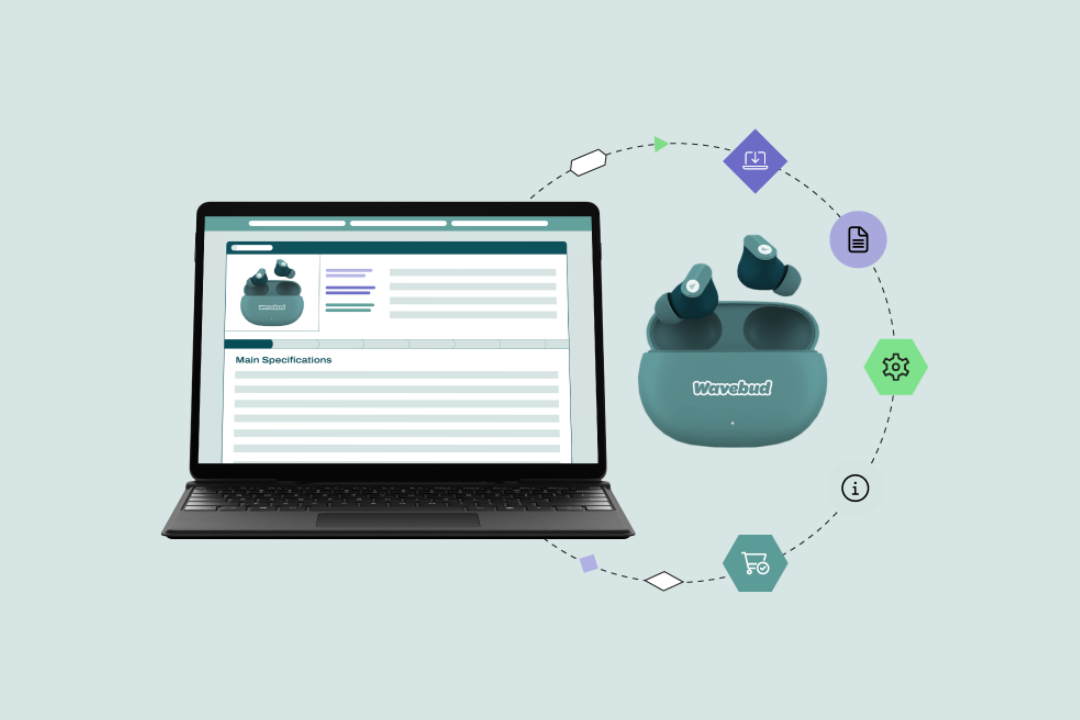Managing product content across e-commerce platforms has never been easy. And as brands adapt content to fit dozens or hundreds of retailer sites, they must find methods to manage their content accurately, efficiently, and strategically.
Understanding Product Information Management (PIM) empowers brands to position themselves to win their market. Read below for a quick overview of PIM and how the right partnership can propel you to sell more and exceed your targets.
Understanding Product Information Management
Product information management is the process and systems by which a brand manages and enhances product information across platforms. Your PIM shapes how you market and sell your goods through your various distribution channels.
A PIM solution or system improves your sales performance across omnichannel touchpoints. It serves as a centralized hub of product data and management tools that allow you to aggregate, validate, and communicate your product content across all your systems.
In short, your PIM solution determines your success in today’s retail spaces. It affects and informs online presence and the actions you take there, which also dictates your brick-and-mortar success.
All retail is omnichannel. Robust PIM solutions ensure you succeed in your market across all channels and earn the top positions on your digital shelf.
Why Do You Need a PIM Solution?
PIM technology make creating and delivering compelling commerce experiences fast and simple. Regardless of your industry, you know the value –– and challenge –– of maintaining product data.
Endless variables and obstacles present themselves as you create product detail pages (PDPs). Your PIM system preemptively addresses these concerns with data management tools. Below are the top five reasons your business needs a PIM solution.
1. Streamlined Data Entry
Retailer guidelines constantly shift. Product information can change. Manually addressing these issues is impossible when you must account for hundreds or thousands of SKUs on multiple retailer sites.
PIM solutions provide for streamlined data entry, saving time and resources. You don’t need to enter product data across each channel manually. PIM solutions allow you to update a single entity or your entire trading partner list at once and in the format of their choice. The time and energy you save in this step can be reinvested into other areas of your business that help you reach your goals.
2. Real-Time Data Tracking
PIM solutions sync product data across your e-commerce platforms and channels. This ensures buyers see high-quality, accurate, and consistent product data at every interaction with your brand.
Real-time tracking allows you to identify discrepancies in your product information. Whether you have errors or missing data fields, PIM systems alert you to potential issues and empower you to make changes instantly and in the correct formats.
3. Single Source of Data Truth
PIM systems streamline your product data workflows. Before PIM solutions, brands housed their product data across multiple spreadsheets and files. Before e-commerce became the primary retail source, this posed less of an issue.
But today, when e-commerce drives retail success, centralizing your product data into a single source of truth is necessary.
PIM solutions allow you to host your product data in a central location. This ensures that all sales channels present the same accurate, up-to-date information. All team members can access the same data, reducing errors that come from searching for product data across multiple locations or files.
4. Scalability
Conversions are the goal for most e-commerce businesses. Your needs today won’t be the same as your needs two, five, or 10 years from now. Your PIM technology allows you to build your e-commerce product data with scalability in mind.
PIM solutions help simplify the scalability process. Instead of manually inputting new data over hundreds or thousands of pages, you can upload your entire database and disburse it through the system. Centralizing and optimizing your product data is straightforward.
And as your brand and inventory grow, your PIM system allows you to scale and release new products quickly, so you don’t lose any traction with potential or existing customers.
5. Standardization
Various standards exist across your trading network, and it’s crucial to understand and align with each requirement. Inconsistent product information shared with your trading partners can lead to unmet requirements and missed time on the shelf. 1WorldSync’s PIM technology with GS1® Standard compliance can automate this process so you can trust that the product content exchanged between your trading partners supports regional and regulatory standards across the board.
What Product Information Do You Manage with a PIM Solution?
Your product information consists of three primary types: technical data, usage data, and e-commerce branded content. While each type of product data provides unique information and selling points, all contribute to the larger goal of increased e-commerce conversions. PIM solutions let you input, enrich, and distribute product data to consumers on the channels they shop.
Below we explore the three types of product information your PIM solution can optimize for your e-commerce brand:
1. Technical Data
Technical product data covers specifications; including size, dimensions, materials, color and weight. Your technical data provides users with hard facts about your product. This information is critical in establishing consumer expectations and proving the quality and usefulness of your products.
The technical product information on your product detail pages informs shoppers of the must-know information that helps them move toward a purchase. This type of data’s accuracy is crucial. Imagine if the color or size of your product was misrepresented in your product listing. This would break consumer trust and result in a bad customer experience. From there, you can expect negative reviews and increased return rates.
But with a robust PIM solution, you can avoid issues resulting from inaccurate product information. PIM systems allow you to update your technical data on every listing in real-time, so you never have to deal with the fallout from misleading or inconsistent data.
2. Product Usage Data
Usage data includes information on how shoppers should use your products. This can include the when, where and why of product usage, providing suggestions that enhance the buyer’s experience with your product.
Usage data and how-to information provides further context for your products and is the ideal place for you to cross-sell other products in your inventory.
Within this product data section, your content team can focus on your SEO and page visibility. As you create copy explaining your product usage, include targeted keywords that attract your desired shopper. This allows you to drive traffic and sales while serving the consumer.
Your PIM solution makes data disbursement (and even your marketing) simple and efficient.
3. E-Commerce Marketing Content
The last primary type of information for PDPs is e-commerce marketing content. E-commerce marketing content is the brand-driven component of your PDP that shares the “why buy” for your product and company. This type of content fosters and cultivates a connection with the shopper, helping them see why they need or want your products. Using emotive and descriptive language, this section of your product listings relies on the emotional connection to the reader as well as your product’s key differentiators.
E-commerce marketing content compels the shopper toward a purchase by helping them visualize themselves owning and using your products.
Like the two data types explored above, e-commerce marketing content plays a unique role in driving conversions. When technical data, usage data and e-commerce marketing content are strategically woven together on your product listing, you provide consumers with the information they want and need, incentivizing them to add to cart and complete the sale.
Partnering with 1WorldSync for Your PIM Needs
Product information management is essential for e-commerce and omnichannel success. 1WorldSync has PIM software and systems that allow you to manage all your product information simply and efficiently.
If you’re ready to take control of your product information, reach out to the team at 1WorldSync today.






